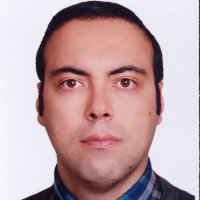Effect of Electromagnetic Field on Seed Germination and seedling growth of Annual Medics, Barley, Dodder and Barnyard grass
The objective of the present study was to investigate the effect of electromagnetic field (88 and 128 µT) and exposure times (12 and 24 hours for weed seeds and 10 and 30 minutes for crop seeds) on annual medics (Medicago radiata, Medicago scutellata and Medicago polymorpha), barley (Hordeum vulgare), dodder (Cuscuta monogyna) and barnyard grass (Echinochloa crusgalli) seed germination. There were differences among different treatments (P≤0.01) for root, shoot and seedling dry weight in barnyard grass. Fresh weight and seedling vigor index were different between treatments (P≤0.05). There was no significant difference among treatments for germination percent, index and rate coefficient in barnyard grass. Electromagnetic intensity affected root dry weight of barnyard grass and increased this parameter in comparison with control. There were differences among treatments for germination percentage, shoot length and dry seedling and shoot weight and seedling vigor index in dodder seeds (P≤0.01). Seedling vigor index and dry weight decreased in dodder seeds under different electromagnetic intensity. Electromagnetic intensity enrichment increased germination rate and percentage and shoot length of annual medic species. The greatest germination rate and percent of crop seeds were obtained at electromagnetic intensity of 128 micro tesla, when they exposed for 10 minutes.
-
Drought stress mitigation and physiological traits modulation in black cumin (Nigella sativa L.) by biofertilizers and zinc foliar application
Somaye Rafie, Alieza Yadavi*, Mohsen Movahhedi Dehnavi,
Journal of Plant Process and Function, -
Morphophysiological responses and nutrient uptake of stevia (Stevia rebaudiana Bertoni) to the application of biofertilizers and methyl jasmonate under drought stress conditions
Fatemeh Roshdi, Mohsen Movahhedi Dehnavi *, Amin Salehi,
Iranian Journal of Plant Biology,



